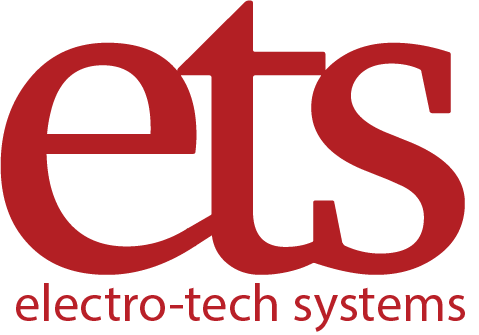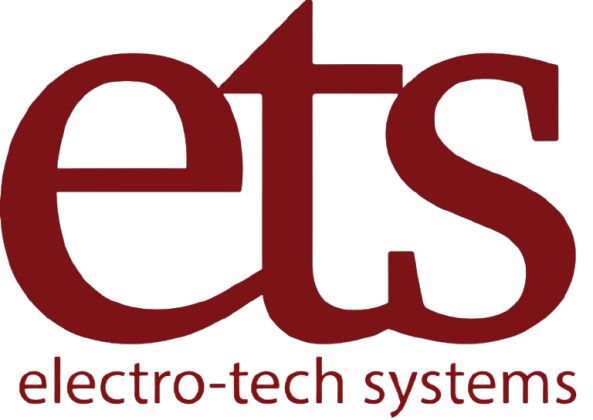Top Benefits of Using a Dry Gas Dehumidification System in Laboratories
Ensuring the precision and dependability of scientific studies, safeguarding delicate materials, and prolonging the life of advanced equipment all depend on maintaining exact climatic conditions in laboratory environments. Controlling humidity is one of these environmental elements that is especially important. Even slight variations in moisture content can destroy equipment, impair experimental outcomes, or deteriorate delicate items like electronics, medications, or chemicals based on lithium.
The ultra-low humidity requirements required in high-precision laboratories may not always be met by conventional dehumidification methods, such as refrigeration-based or desiccant-based systems. Dry gas dehumidification systems, such as Electro-Tech Systems, Inc.’s M 5465 Dry Gas Dehumidification System, are useful in this situation. These systems are essential for contemporary research centers because they provide unmatched control over laboratory settings.
You can check the product here: M 5465 Dry Gas Dehumidification System
What is a Dry Gas Dehumidification System?
A dry gas dehumidification system is an environmental control solution that uses compressed dry gases such as nitrogen, carbon dioxide, or filtered dry air to remove moisture from enclosed areas such as gloveboxes, dry boxes, or environmental chambers.
Unlike standard dehumidifiers, which use refrigeration or chemical desiccants to absorb moisture from the air, dry gas systems work by purging humid air with pre-dried gases. This approach allows for the regular maintenance of extremely low relative humidity (RH) levels—sometimes as low as 5% RH—which is frequently required for delicate research and manufacturing processes.
The M 5465 Dry Gas Dehumidification System is designed exclusively for laboratory settings, offering a dependable and cost-effective option for accurate humidity control. It is compatible with ETS glovebox chambers, Series 5000 controllers, and pressure monitoring systems, making it suitable for a wide range of lab configurations.
Why Humidity Control Matters in Laboratories?
Before delving into the advantages of dry gas dehumidification, it is vital to understand why maintaining optimum humidity is critical in laboratories.
- Preservation of Sensitive Materials: Many chemicals, pharmaceuticals, and electronic components are hygroscopic, meaning they collect moisture from the air, which can cause chemical degradation, corrosion, or changes in physical characteristics.
- Experimental Accuracy: Moisture-sensitive reactions necessitate consistent environmental conditions. Even modest humidity differences might distort results and limit reproducibility.
- Equipment protection: Excess humidity can cause condensation and corrosion in instruments such as analytical balances, spectrometers, and microscopes.
- Compliance: Laboratories in regulated businesses must follow strict environmental requirements, which frequently include humidity control. Failure to comply may result in regulatory concerns or impaired product quality.
By resolving these difficulties, dry gas dehumidification devices have become essential in modern laboratories.
Key Benefits of Using a Dry Gas Dehumidification System
- Ultra-low humidity levels
One of the key benefits of a dry gas dehumidification system is its capacity to attain extremely low humidity levels, which are significantly lower than those of ordinary desiccant or refrigeration dehumidifiers.
For example, the M 5465 system can maintain humidity as low as 5% RH, making it appropriate for sensitive laboratory procedures such as:
- Lithium-ion battery research and manufacturing
- Semiconductor and electronic fabrication
- Pharmaceutical development
- Moisture-sensitive chemical reactions
Maintaining ultra-low humidity guarantees that these processes are stable and reliable, avoiding moisture-related errors or product degradation.
- Rapid humidity stabilization
Dry gas systems are recognized for their quick response times. When humidity levels suddenly rise owing to chamber access or gas leakage, these devices immediately restore optimal conditions by purging the chamber with dry gas.
This quick stability is crucial in laboratories, where investigations might span hours or days. Even a little exposure to high humidity can jeopardize research, necessitating immediate correction.
- Protection for Sensitive Equipment and Materials
Excess moisture can harm laboratory equipment and supplies. Examples include:
- Corrosion of metallic instruments
- Degradation of Hygroscopic Compounds
- Condensation on optical instruments, such as microscopes and lasers
- Reduced shelf life of medications
The M 5465 Dry Gas Dehumidification System extends the life of lab assets, reduces maintenance costs, and prevents unplanned downtime by keeping humidity under control.
- Energy Efficiency and Cost Savings
Dry gas dehumidification systems are often more energy efficient than refrigeration-based systems since they do not require compressors or large-scale mechanical cooling.
The M 5465 system uses current compressed dry gas sources and operates in an open-loop system, which means it consumes less energy while maintaining appropriate humidity. Additionally:
- There is no need for a pricey desiccant refill.
- Minimal maintenance required.
- Reduced the likelihood of equipment downtime
This results in long-term cost savings for laboratories while maintaining performance.
- Flexibility and Adaptability
Modern laboratories require adaptable systems that can accommodate various procedures and equipment. Dry gas dehumidification systems can be connected to:
- Glove boxes and dry boxes.
- Environmental chambers
- Analytical instrument enclosures.
The M 5465 system is compatible with ETS glovebox chambers, Series 5000 controllers, and advanced pressure monitoring systems, providing flexibility to fulfill specific experimental needs.
- Enhanced Safety and Contamination Control
Maintaining controlled humidity is also a safety measure, especially when working with moisture-sensitive or reactive substances. Excess water vapor in the air might cause undesirable chemical reactions or the development of harmful byproducts.
Using Dry Gas Dehumidification:
- Reduces contamination risks.
- ensures the safe handling of delicate compounds.
- Provides a regulated setting for biological or chemical studies.
- Complying with Industry Standards
Laboratories that follow regulatory frameworks such as GMP (Good Manufacturing Practices), ISO standards, or FDA criteria must provide reproducible environmental conditions. Dry gas dehumidification systems assist laboratories:
- Maintain constant humidity levels.
- Produce dependable and reproducible findings.
- Avoid regulatory compliance difficulties.
This makes them ideal for pharmaceutical, chemical, electrical, and high-precision research facilities.
- Ease of Integration and Operations
Dry gas dehumidifiers are simpler to operate than sophisticated HVAC or refrigeration systems. The M 5465 system is intended for easy integration into existing laboratory setups. The key features include:
- Open-loop operation for direct purging.
- Compatible with the existing glovebox controls.
- Minimal upkeep and simple mon
This shortens the learning curve for lab technicians while maintaining consistent performance.
Applications for Dry Gas Dehumidification Systems
Dry gas dehumidification is suitable for
- Pharmaceutical labs – Protecting hygroscopic substances and maintaining quality control.
- Battery Research Labs – Moisture-free lithium-ion and lithium-metal studies.
- Semiconductor Fabrication – Preserving extremely dry conditions for delicate parts.
- Chemical Synthesis – Preventing undesirable moisture-based reactions.
- Optical and Laser Laboratories – Preventing condensation on delicate optical parts.
Why Choose the M 5465 Dry Gas Dehumidification System?
The M 5465 Dry Gas Dehumidification System by Electro-Tech Systems, Inc. stands out because of:
- Ultra-low humidity control: reaches as low as 5% RH.
- Energy-efficient operation: Uses minimum electricity by utilizing compressed dry gas.
- Rapid stabilization: quickly restores the target humidity levels.
- Wide compatibility: Works flawlessly with glove boxes, dry boxes, and Series 5000 controllers.
- Cost-effective: minimal maintenance and low running costs.
By choosing the M 5465, laboratories obtain a dependable solution for precise environmental management, which ensures experiment integrity, material protection, and regulatory compliance.
Check it here: M 5465 Dry Gas Dehumidification System.
Conclusion
Maintaining accurate humidity levels is no longer optional in high-precision laboratory settings; it is required. Dry gas dehumidification systems provide unparalleled control, speed, and dependability, guaranteeing that tests are carried out in ideal circumstances, delicate materials are safeguarded, and equipment longevity is maximized.
Electro-Tech Systems, Inc.’s M 5465 Dry Gas Dehumidification System is the right choice for laboratories aiming to achieve ultra-low humidity with little energy usage and operational complexity. Its versatility, cost-effectiveness, and compliance support make it a must-have tool for modern laboratories working in medicine, electronics, chemical synthesis, and advanced research.
Investing in a dry gas dehumidification system involves more than just regulating humidity; it also ensures accuracy, dependability, and long-term operational efficiency in laboratory settings.

